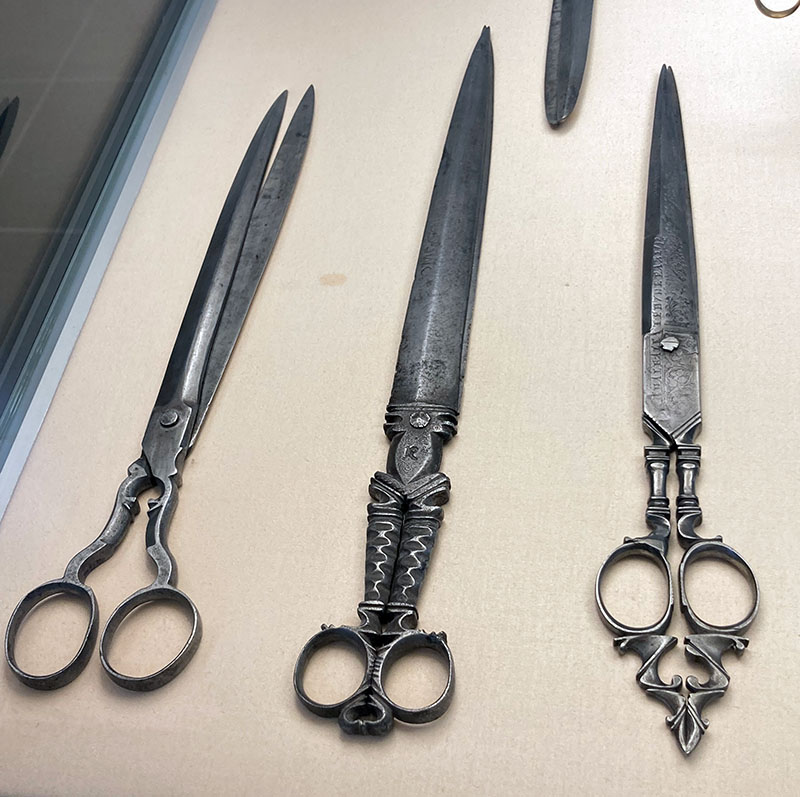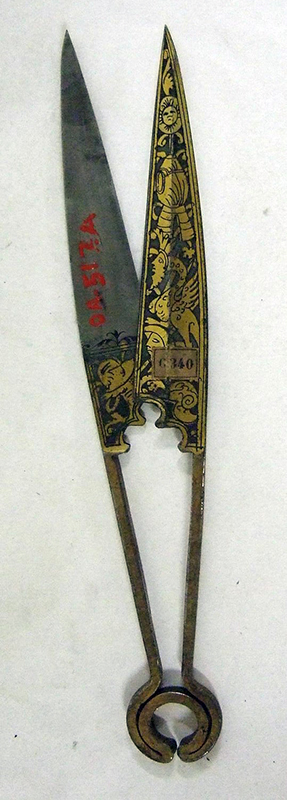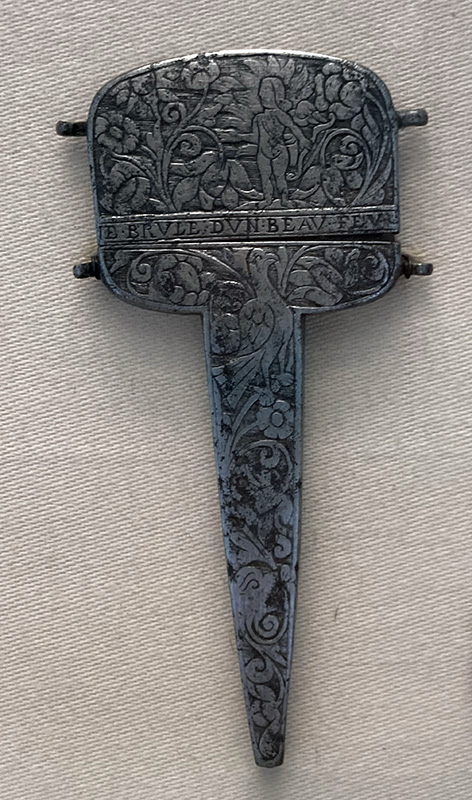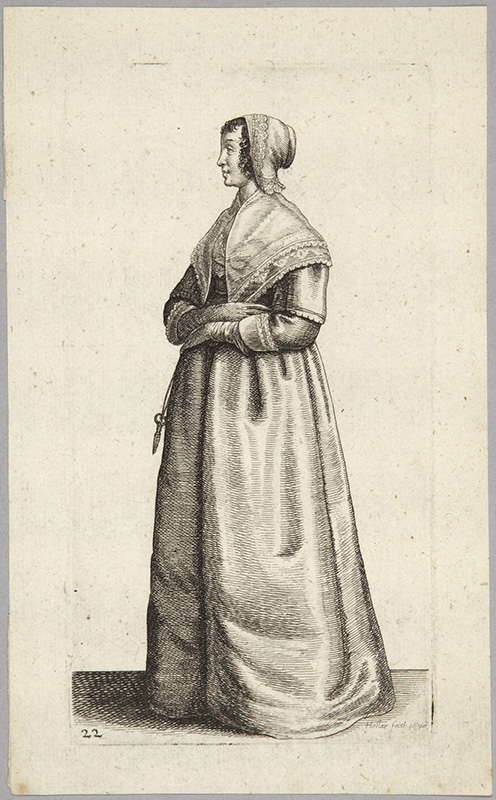Exploring Luxury Scissors as Works of Art in the Early Modern World
Click on images to enlarge them and view captions.
by Claire Sabitt
A generous research grant from the Decorative Arts Trust allowed me to carry out early-stage dissertation study of a previously unexplored area of scholarship: decorative scissors. My project is particularly aimed at the early Modern period, roughly from 1450–1750, when scissors first emerged as prized personal objects (figures 1, 2, and 3). Although scissors as tools appear at least as early as 2,000 BCE, the first evidence for luxury scissors dates to the late 15th century. By the 19th century, decorative scissors became more widespread, especially in England and France, as evidenced by the vast extant collections. Herein lies the central question of my dissertation: how did scissors transform from a utilitarian object into veritable works of art? What were the driving forces that inspired artists and patrons to make and commission highly decorative scissors often stored in elaborate cases? Under what conditions would these objects have been seen or used? Moreover, what can decorative scissors tell us about the status of metalworking in practice and theory, and the division (or likely, lack thereof) between the decorative and fine arts in the early Modern world?
Geographically, scissor production appeared in established centers of blade making, such as those producing cutlery and daggers. Scissor workshops, however, were always distinct. The trade was passed down in families through apprenticeships, resulting in a relative paucity of archival and literary sources. The separation of scissor workshops from other types of blades and cutlery was almost certainly due to the technical complexity of making these tools. Later called a “putter” in England, the person in charge of assembling the two blades needed to heat, hammer, and rivet the blades together with precision to ensure the scissors could cut sharply without causing too much friction between the blades. When made of precious metals like silver or covered in damascening or gilded patterns, a delicate technique was needed to sharpen scissors.
The cost of luxury scissors came from not only the material itself, but also the time and labor they demanded, even after the water wheel became more widespread in the 17th century and scissors could be sharpened more quickly. So-called spring scissors (figure 4), made of one single piece of metal, were an older style that was slightly less complex to produce. Rather than pulling the two blades apart, one pushed them together. This could sometimes give the user more leverage to cut through thick material, while the style also had the potential for more dexterity. Scissors made of two blades riveted together, however, could be used for more delicate work like embroidery or cutting paper.
Spring scissors persist throughout the early Modern period, often decorated with complex gilded patterns or stored in custom cases. A pair of damascened spring scissors now in the Louvre (figure 4) is an exemplary case study. Damascening is a highly durable but technically complex way to adhere gold to other metals, suggesting that these scissors were intended to be used. This technique required removing areas of steel and laying gold wire into the carved channels before hammering it into place. A burin would leave behind a miniscule ridge of rough steel, and when a design was hammered into place, these ridges would flatten, forming a border of steel holding the gold into place. This was a more secure method than gold etching, which did not require the artisan to remove channels of metal, but instead simply press gold leaf into rough scratched areas of steel.
The design of this pair of scissors is especially noteworthy, and the tiny image of armor on the blade is explicit evidence that the design was adapted from an ornament print intended for etched fluted armor, a style popular throughout the latter half of the 16th century in Italy and Germany. Ornament prints circulated widely at the time, and artists could adapt them for the shape of the blade. The breadth of styles, sizes, and the implications of specialized designs suggests that decorative scissors were intended to be seen as well as used.
In addition to highly decorative scissors, this project also investigates the decorative cases in which scissors were stored. During my travels to the UK, Spain, France, and Germany supported by the Trust, certain typologies became apparent. One especially important and common object was a small case for embroidery scissors (figure 5). Cases often have small holes that would allow their owner to use a piece of string and wear the scissors on a belt (figure 6) or around her neck as a necklace. This demands a reconsideration of scissors and their cases as practical items as well as fashion accessories. Their clever inscriptions and classicizing motifs frequently relate to love, and such cases were often marriage gifts in France and the Low Countries beginning in the 17th century.
I have acquired evidence of luxury scissors in Kunstkammer inventories, suggesting that scissors were important in princely realms as well. By examining scissors as objets de vertu, I highlight their material parallels with comparanda like jewelry, sewing boxes, writing cases, cutlery, hunting sets, and other usable arts, and aim to use scissors as a way to reconsider the historical separation of the decorative arts and fine arts.
Claire Sabitt is a PhD candidate in the Department of Art and Archaeology at Princeton University.
A print version of this article was published in The Magazine of the Decorative Arts Trust, one of our most popular member benefits. Join today!




